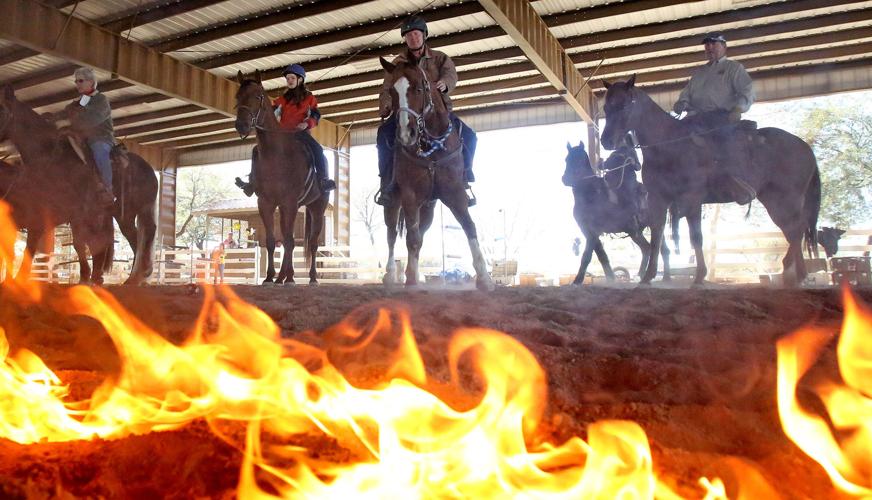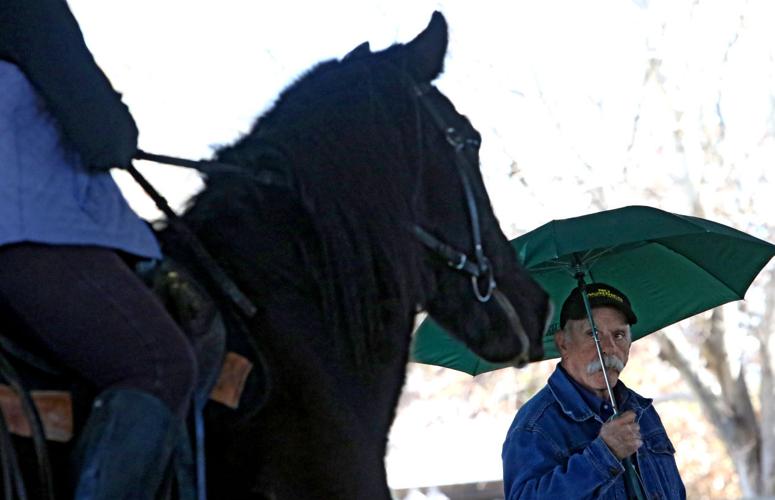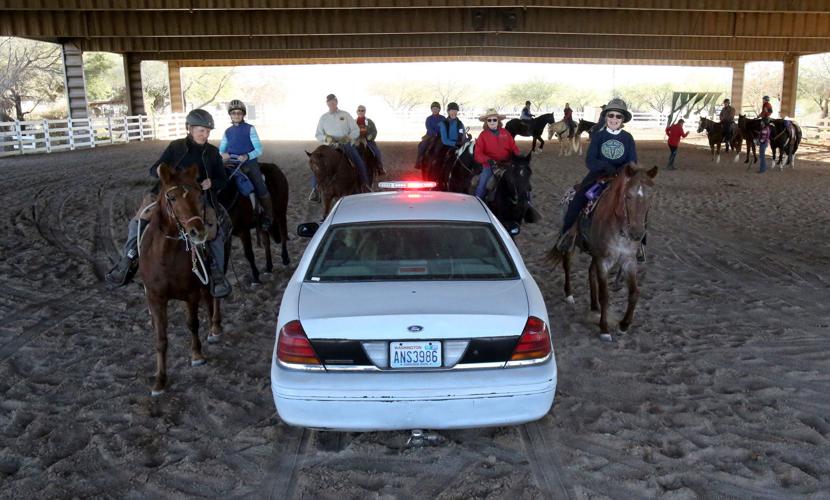With its warm climate and expansive horizons, Tucson beckons the equestrian.
And for many here, retirement offers the time to enjoy the simple joys of riding a horse, whether out on trails or in the upcoming Tucson Rodeo Parade.
There are risks, however, whenever a 150-pound person — however skilled — attempts to manage 1,000 pounds of hoof and muscle. Horses are programmed to overreact. They run and rear when things get scary, and can sometimes unseat even the most seasoned rider.
That’s what Bill Richey hopes to help with.
At the invitation of the Tucson Saddle Club, Richey has offered two desensitizing clinics here — one in November and one last weekend — and is hosting another one this weekend.
Richey, a longtime mounted police officer from Mobile, Alabama, has been teaching equestrians for more than a decade. He’s traveled worldwide to help riders learn to be assertive under pressure.
The Saddle Club is sponsoring the clinic in part to encourage more of its members to ride in the annual Tucson Rodeo Parade, and also to help all riders better manage their mounts, regardless of the rider’s age.
Barbs and sirens
J.J. Marie, 72, was hospitalized with broken bones one year ago after his horse got tangled in some cactus and went a little crazy.
After his recovery, getting back in the saddle was never in doubt for Marie, who grew up riding horses in France. After his retirement more than five years ago, he moved to Tucson and his passion for horses rekindled.
“I hadn’t been on a horse in 42 years, and decided I wanted to get back into it,” he said. “If someone told me I’d be riding cutting horses when I’m 73, I’d have said, ‘You’re crazy.’ ”
Marie now rides five days a week, working cows and exploring the trails. He recently started learning vaquero-style riding.
But despite all of his experience with horses, he still found the clinic here very helpful.
“You will never de-spook your horse to everything. There will always be something he’ll spook over,” he said. “This clinic gets pretty extreme with bridges and smoke and cars and dogs charging at you. You need to see what the reaction of your horse will be.”
Richey helps riders learn what triggers their mount, to anticipate reactions and then has them practice gently but assertively move the horse through it.
“There’s no such thing as a bombproof horse,” he said. “There is going to be something that is going to bother him and the trick is to have an understanding and stop the spook before it starts, or gain enough control once he spooks that you’re still in the saddle.”
Richey currently conducts about 48 clinics a year. He said roughly 60 percent of his clients are women between the ages of 40 and 65, while some are quite a bit older than that. One of his students last weekend was 81.
Overcoming challenges
Saddle Club President Dan Simmons said a significant number of their riders are older, so much so that he’s hoping to attract younger riders so the club stays active.
“Gradually, there are people aging out to the point where they can’t ride anymore,” he said. “A lot of these older people are people like my wife, who rode when they were younger and are retired now, and want to get back into horses.”
There are more than 200 riders in the Tucson Saddle Club, a nonprofit focusing on equine legislation, good horsemanship and the acquisition and preservation of trails.
Members have ridden all over Arizona, but mostly within 100 miles of Tucson.
Terrain on the rides is very diverse, ranging from easy to much more challenging for the experienced rider.
The Saddle Club rates their rides in terms of difficulty so people can choose which ones suit them.
“Many riders, as they get older, don’t want as challenging or as long of a ride,” he said. “People like to go in smaller groups so the horses don’t get as excited.”
Pamela and Art Deters got back into horses after retiring 14 years ago.
Art Deters, 79, was raised one mile from Churchill Downs in Kentucky and rode a lot when he was young. Pamela Deters, 67, grew up riding in England.
Both are part of the Tucson Saddle Club, and both participated in the November clinic.
Art Deters said he has ridden in the Tucson Rodeo Parade without too much trouble, but found the Tombstone parade much more challenging. His horse, a buckskin named Romeo, did not take kindly to the Shriners’ little cars and all the noise they were making.
“He did not like it,” he said. “We literally went down Allen Street sideways.”







